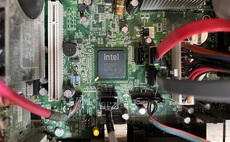To coincide with the tenth anniversary of Centrino, we look at how the launch was covered at the time
To mark the tenth anniversary of Intel Centrino, V3 is publishing a series of articles on the original Intel wireless laptop platform. This article is a report on Centrino published just after the ...
To continue reading this article...
Join Computing
- Unlimited access to real-time news, analysis and opinion from the technology industry
- Receive important and breaking news in our daily newsletter
- Be the first to hear about our events and awards programmes
- Join live member only interviews with IT leaders at the ‘IT Lounge’; your chance to ask your burning tech questions and have them answered
- Access to the Computing Delta hub providing market intelligence and research
- Receive our members-only newsletter with exclusive opinion pieces from senior IT Leaders





















